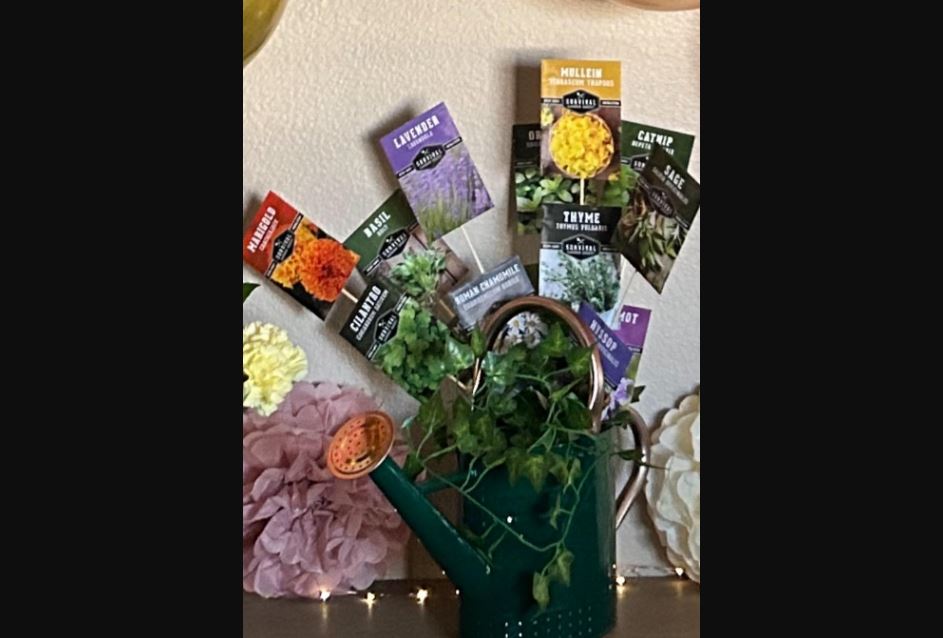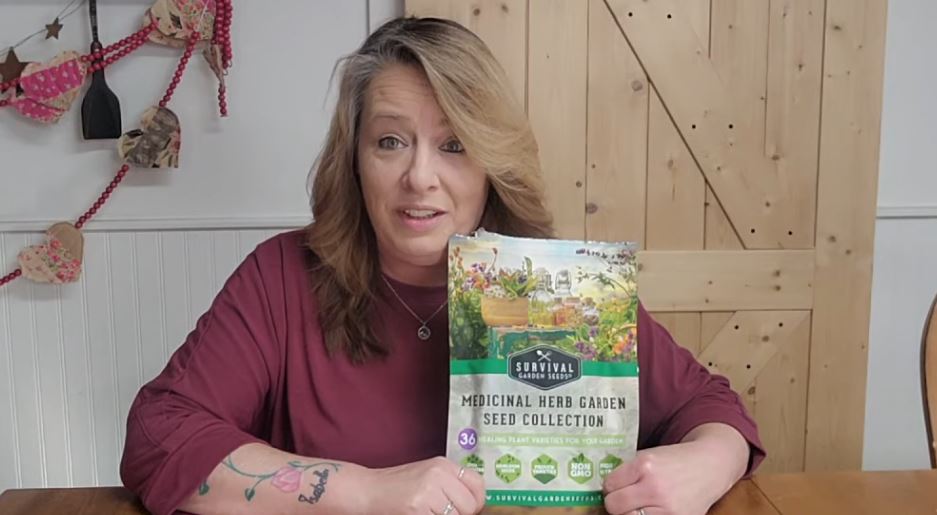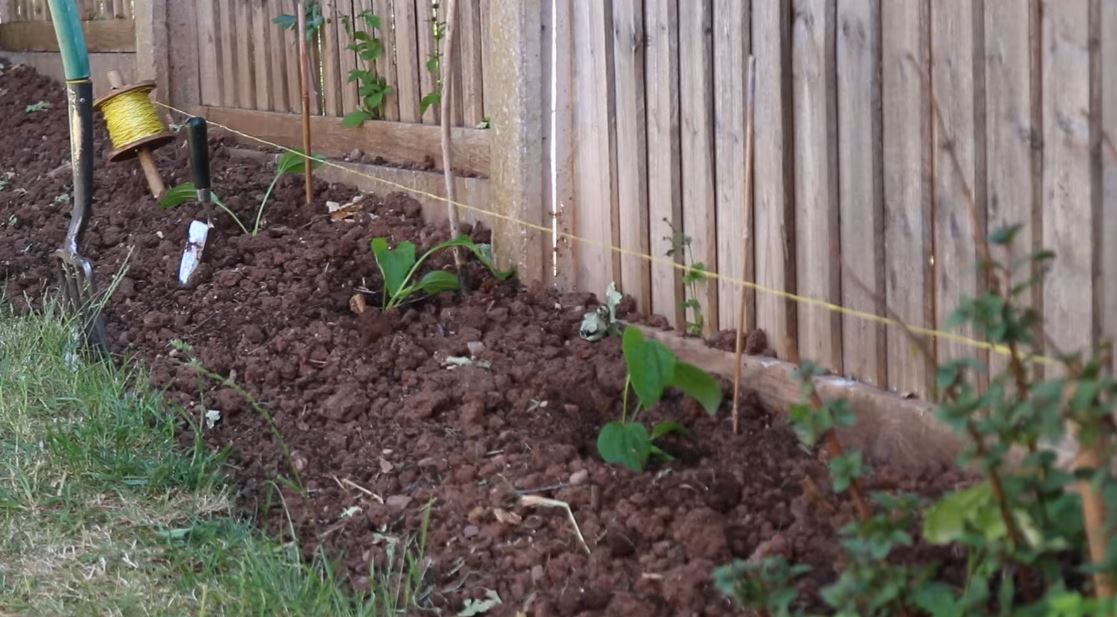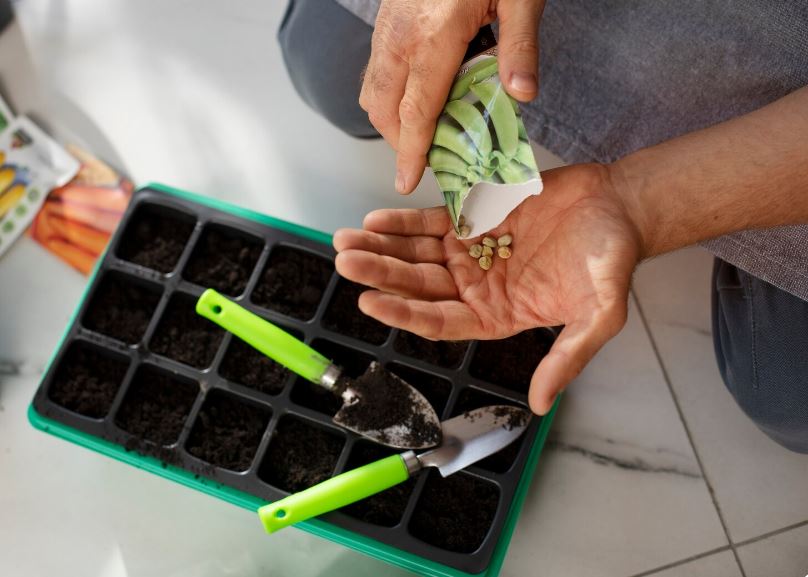From homesteaders reviving ancient herb-gardening traditions to health-conscious millennials seeking agency over their wellness, the idea of a backyard apothecary has sparked genuine interest in recent years. With its promise of a personal garden of therapeutic plants and, hopefully, a new chapter of self-reliance, Nicole Apelian’s medicinal seed kit rides squarely in that wave. Her personal story—a scientist-turned-survivalist who overcame a severe illness and changed her course—contributes greatly to the kit’s appeal. The garden kit has a mission, a story, and a personal resonance thanks to its backstory, which goes beyond simple product marketing.
Ten carefully chosen plant seeds—chamomile, feverfew, calendula, lavender, marshmallow, yarrow, echinacea, chicory, evening primrose, and California poppy—are included in the kit’s packaging. For novice herbalists, the seed-line seems carefully chosen, making the project approachable and instructive. The offering appears refreshingly simple at first glance: sow these seeds, grow your own remedy garden, and follow the instructions. However, actual gardening is frequently messy, and the likelihood of turning those seeds into useful cures greatly depends on factors like soil, climate, and cultivation expertise. Like putting together a model kit, you receive all the components but still have to do the work.
| Field | Details |
|---|---|
| Name | Nicole Apelian, Ph.D. |
| Primary Roles | Herbalist, Biologist, Anthropologist, Survival TV Personality, Educator |
| Education | B.Sc. in Biology (McGill University), M.Sc. in Ecology (University of Oregon), Ph.D. in Sustainability Education and Cultural Anthropology (Prescott College) |
| Career Milestones | Peace Corps game warden in Botswana, survivalist on TV show “Alone” (Seasons 2 & 5), herbalist educator |
| Personal Health Journey | Diagnosed with multiple sclerosis in 2000, managed condition using herbal and lifestyle methods |
| Entrepreneurial Work | Founder of Nicole’s Apothecary, creator of the Medicinal Garden Kit |
| Signature Product | Medicinal Garden Kit – includes heirloom seeds, remedy guide, and self-sufficiency philosophy |
| Wellness Focus | Natural health, ancestral healing, plant-based medicine, herbal education |
| Target Audience | Homesteaders, natural wellness seekers, survivalists, beginner herbal gardeners |
| Recognition | Known for combining scientific background with wilderness survival experience |
Apelian’s combination of wilderness experience and scientific credentials is one of the journey’s most interesting features. She represents a unique blend of the academic lab and the wild outdoors, having studied biology and anthropology and participated in the survival show Alone. This gives the medicine-garden concept a semblance of legitimacy. However, a more thorough examination of the stated advantages reveals a weaker basis.
For instance, chicory is suggested in the kit materials as a natural pain reliever that is high in chicoric acid; however, there are few published clinical trials on humans, and the majority of the data are still from in vitro or animal studies. In a similar vein, feverfew is mentioned as a migraine reliever, although there is conflicting evidence regarding its effectiveness in human trials. Natural remedy claims for serious illnesses frequently have “no scientific rationale or evidence base to support them,” according to an expert cited by McGill University. Therefore, although the story is empowering, the supporting data is, at most, weak.
The kit’s value is merely reframed by this disconnect between clinical evidence and emotional appeal. The kit offers something noteworthy if a buyer realizes that the goal is not to replace pharmaceuticals but rather to educate, immerse oneself in gardening, and ritualize self-care. High germination rates, a variety of herb varieties, and the joy of seeing seedlings grow—what you might call a “hands-on initiation” into herbalism—are all mentioned in user reviews. Giving their daughter the kit resulted in a meaningful weekend planting ritual, according to one reviewer. In and of itself, taking care of the plants becomes therapeutic.
Conversely, some customers complain about the high cost of what might be essentially inexpensive herb seed packets with a guide included. When bought separately, common kitchen herbs can be much less expensive, and online instructions are readily available. This makes a compelling case for a “DIY alternative.” However, the value proposition needs to be seen through the prism of intent: if one purchases it in anticipation of a personal herbal apothecary and educational experience, it fulfills those expectations; if one purchases it in anticipation of a miraculous cure, disappointment looms.
There is a broader cultural shift at work that goes beyond the individual purchase decision. In the last ten years, consumers of wellness have gradually shifted away from centralized pharmaceutical supply chains and toward plants, do-it-yourself remedies, and small-scale sustainability. That trend is nicely reflected in Apelian’s kit. It appeals to our desire to regain control over our health journey, even if only symbolically. The transformation of drought-resistant herbs into homegrown wellness rituals using seeds, soil, and sunlight reflects a larger desire for empowerment and authenticity. This is a return to concrete, tactile relationships, much like the resurgence of vinyl records following the streaming era.
Another dimension is the influence of celebrities. In the same way that prominent personalities in the wellness industry have endorsed adaptogenic supplements or mushroom tinctures, Apelian uses her herbal expertise and TV-survival credibility to attract attention. Her kit carries the impact of both product and persona due to the intersection of media personality and wellness branding. This dual role can amplify the aspiration because the customer is purchasing more than just seeds; they are also purchasing a lifestyle narrative that emphasizes self-sufficiency, resilience, and a connection to nature.
From a practical perspective, the kit’s main advantages are its beginner-friendly design, which combines easy-to-follow directions with eye-catching visuals, and the ease of receiving a carefully chosen starter pack instead of having to buy each herb separately. Herbal gardening is a low-barrier entry point for novices who might be intimidated by it. However, the main disclaimers focus on exaggerated health claims and a dearth of solid data from human trials—problems that responsible users should take into account.
Take the example of a beehive: the hive structure and bees (seeds) are provided by the seed kit; you provide the flowers (soil, care, and environment); and the honey (the end product) is solely dependent on the cooperation of all the components. Although the hive may exist, the honey yield will be subpar if there are no healthy flowers or regular tending. In a similar vein, even the best seeds and a manual cannot ensure effective home-grown cures unless they are paired with diligence, research, and reasonable expectations.
Ultimately, rather than being a surefire cure, the medicinal seed kit is best viewed as a launching pad for herbal landscaping and wellness curiosity. You’ll probably find it rewarding if you approach it with the attitude of learning, developing, and trying new things. Instead, you might be frustrated if you’re hoping for significant health advancements. The narrative strength and emotional boost of the kit come from Nicole Apelian’s story of overcoming adversity through science and nature. Your planting, patience, and perspective will determine the actual garden you grow and the value you extract. When handled properly, the experience can be both pleasurable and consistent with a larger cultural revitalization that values self-care, mindfulness, and a connection to nature.




